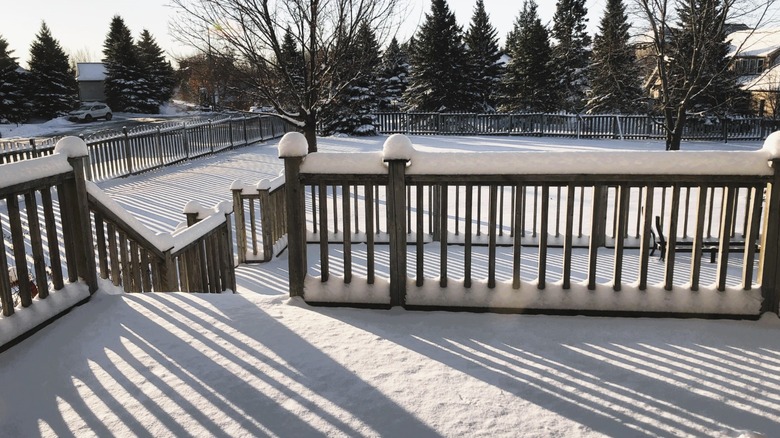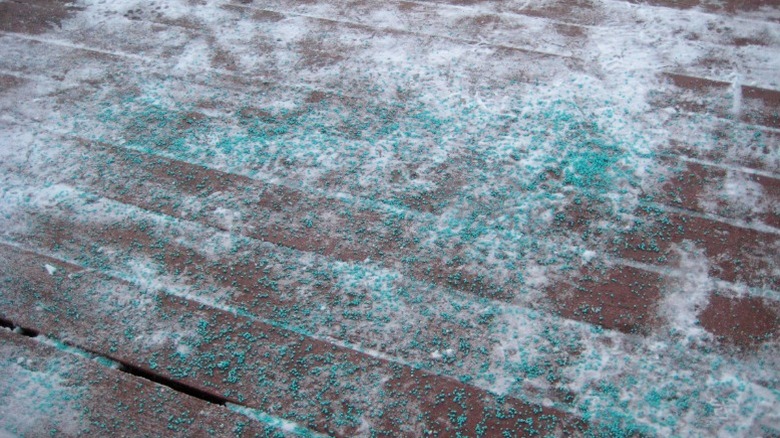Safely Remove Snow From Your Deck With These Helpful Tips
After winter storms dump loads of snow on your deck, be prepared to remove it safely and efficiently. If you're not careful about how you remove it, you can actually end up damaging your deck. Not using the right tools is one of the biggest mistakes you can make when removing snow. Another tip to safely remove snow on your deck is to use the right salt or ice melt for your deck. While you can head to the kitchen and grab table salt to easily de-ice your driveway, you might want to think again about using it for your deck.
Remember that removing snow from a deck is not always necessary. If you are worried that the weight of snow will lead to a collapsed or broken deck, check to see if it's under 3 feet. As long as the railing remains visible, you can feel confident that your deck can bear the weight of the snow. Otherwise, only remove snow when it's more than 3 feet or you need to clear a path to walk safely.
Use the proper tools for snow removal
If you follow one rule when shoveling your deck, make sure to never use a metal shovel. Metal shovels, while great for heavy-duty use on concrete and asphalt driveways, are too abrasive for most decking material. Softer woods, like cedar, will be more likely to sustain damage. Instead of a metal bladed shovel, use a plastic shovel with a softer rubber blade.
How you use your snow removal tools also matters. Going against the grain of your wood deck will lead to scratches or dents in the boards. Push your shovel in the direction of the boards to prevent damage, moving the tool parallel to them.
If your area receives a bare dusting of snow, don't even bother to shovel your deck. Grab a broom to gently sweep the snow off without a lot of effort. Snow accumulation up to a couple of inches, especially if it isn't very wet, can be removed quickly in this manner. It's a clever hack that makes snow removal easier without gouging your deck.
Avoid spreading abrasive substances
The products you use to eliminate ice and snow and prevent accumulation, like ice melt and salt, can have an adverse effect on your deck. Rock salts and any products that contain sodium chloride, will damage a variety of decking materials, including wood. Its impact on wood over time is to leave it discolored and corroded. Also avoid products that use coarse sand to add traction, which will also create scratch marks. While you can safely melt the ice on your driveway with household essentials, like vinegar, always double check before using it on a wood or composite deck. Certain things, like sand and pickle juice, can be too abrasive or acidic.
However, calcium chloride products can be used on wood and composite decking, but not on certain soft woods like spruce and cedar. Magnesium chloride can be useful and safe for wood decks, but is inadvisable for those that have pets who will walk on the decking after treatment.
Try an alternative to store-bought ice melt and create your own with simple ingredients in your home. Mix a DIY ice melt using vinegar, water, and dish soap to treat wood decking. In a spray bottle, add two parts vinegar to one part water along with a little bit of soap.


